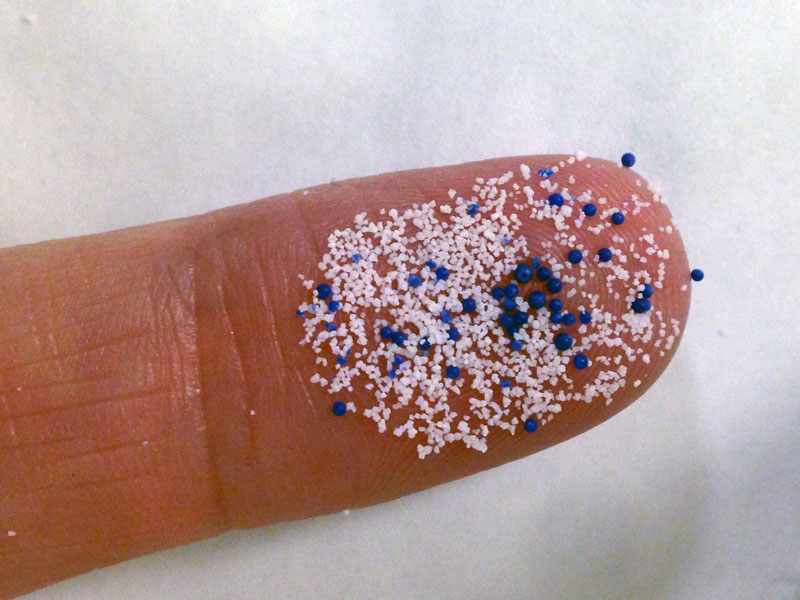Using wash products filled with tiny beads of plastic is polluting our bodies and the environment. Who knew?
Using wash products filled with tiny beads of plastic is polluting our bodies and the environment. Who knew?
According to researchers, a typical shower gel has roughly as much plastic in the gel by weight as there is in the plastic container it came packaged in.
You can’t see it, because most of the plastic in cosmetic products comes in the form of horrid little microbeads – solid synthetic polymers that are insoluble in water, with a maximum size of 5mm. They might be tiny, but they’re a huge problem.
In the cosmetic industry alone, microplastics can be found in denture adhesives, insect repellents, moisturisers, toothpastes, shampoos, deodorant, hairspray, nail polish and bubble bath. The list goes on. In other words, the functions of microbeads go way beyond the scrubbing effect, and the plastic content of these products can range from a fraction of a percent to more than 90%.
But while cosmetic packaging can at least be recycled, microbeads go straight down the drain, ending up in waterways and oceans where they can take hundreds of years to degrade. As well as damaging the environment, microbeads look pretty tasty to fish and quickly enter the food chain, along with the chemical pollutants they harbour.
This next bit is really scary. “Fine particulate plastic may be transported through human gastrointestinal tracts to lymph and circulatory systems, through placentas to unborn fetuses, absorbed in lungs when inhaled.”
Sadly this environmental harm can’t be prevented by collecting these “down the drain” plastics at the end of their life for recycling – the contamination is too dispersed, the scale is too vast, and the ecological damage from remediation is too great.
And so emission prevention is the key mitigation strategy, say experts, and that means banning the sale or importing of products containing these nasty pollutants.
In the meantime, how do we know which products contain microbeads? For a start, there’s a website: http://beatthemicrobead.org/en/science
Or you could read the label. The most common plastics that make up microbeads include polyethylene, polypropylene, polyethylene terephthalate, polymethyl methacrylate, polylactic acid, and nylon.
And if you already have microbead-containing products in your cupboard, you might want to dispose of them.
Just don’t tip them down the sink.
Dr Kerri Parnell is the editor-in-chief of The Medical Republic and can be contacted at kerri@medicalrepublic.com.au


